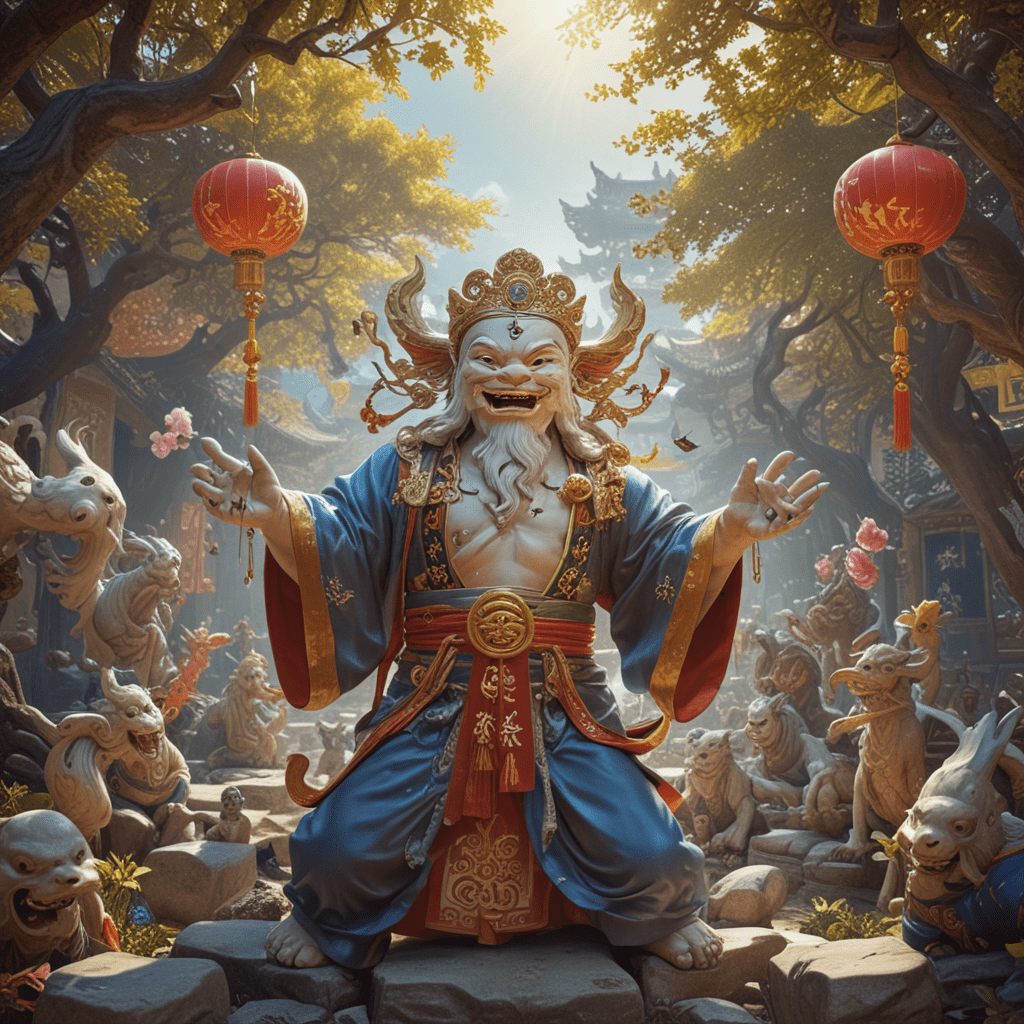1. Cranes as Symbols of Longevity and Happiness
Cranes are revered in Chinese culture as emblems of longevity, happiness, and good fortune. These graceful birds are often depicted in pairs, representing a harmonious and long-lasting marriage. Their elegant movements, coupled with their lifespan of over 60 years, have made cranes symbols of a long and prosperous life. They are frequently featured in Chinese art, literature, and folklore, conveying wishes for happiness and longevity.
2. The Peach as a Symbol of Immortality and Abundance
The peach holds a significant place in Chinese mythology as a symbol of immortality and abundance. In the legend of Xiwangmu, the Goddess of the West, peaches are said to grant eternal life to those who consume them. The peach tree itself is believed to bloom only once every three thousand years, making its fruit even more precious and coveted. In Chinese art, peaches are often depicted in abundance, symbolizing prosperity, wealth, and good fortune.
3. The Pine Tree: A Symbol of Strength, Longevity, and Good Luck
The pine tree is highly regarded in Chinese culture as a symbol of strength, longevity, and good luck. Its evergreen nature represents vitality and resilience, even in harsh conditions. Its ability to withstand strong winds and cold temperatures has made it a symbol of steadfastness and endurance. In Chinese mythology, the pine tree is associated with longevity and immortality, and is often depicted in paintings and sculptures alongside other symbols of long life.
4. The Five Blessings: Symbolism of Health, Wealth, Longevity, Virtue, and Peaceful Death
The Five Blessings is a traditional concept in Chinese culture that represents the ultimate goals and aspirations for a fulfilling life. These blessings include longevity, wealth, health, virtue, and a peaceful death. They are often depicted in Chinese art and literature, and are considered essential components of a happy and prosperous life. The Five Blessings are a reminder of the importance of striving for a balanced and harmonious existence, where both material and spiritual well-being are valued.
5. The Dragon-Horse as a Symbol of Success and Prosperity
The dragon-horse is a mythical creature in Chinese folklore that combines the auspicious qualities of both the dragon and the horse. It is believed to bring success, prosperity, and good fortune to those who encounter it. The dragon-horse is often depicted in Chinese art as having a dragon's head and a horse's body, symbolizing the union of power and speed. It is a popular motif in Chinese architecture, particularly on rooftops and gates, where it is believed to ward off evil spirits and protect the occupants.
6. The Tortoise as a Symbol of Wisdom, Longevity, and Good Fortune
In Chinese mythology, the tortoise is revered as a symbol of wisdom, longevity, and good fortune. Its slow and steady movements represent perseverance and longevity, while its hard shell signifies protection and resilience. The tortoise is also associated with the Water element, which symbolizes fertility, abundance, and prosperity. In Chinese art, the tortoise is often depicted supporting the world on its back, symbolizing the stability and endurance of the universe.
7. The Bat: A Symbol of Happiness, Good Fortune, and Longevity
The bat is a significant symbol of happiness, good fortune, and longevity in Chinese culture. The Chinese word for bat, "fu," is a homophone for the word for "happiness" or "good luck." As a result, bats are often depicted in Chinese art and literature as symbols of good fortune and prosperity. The bat is also associated with longevity due to its long lifespan and its ability to navigate in the dark, which symbolizes wisdom and longevity.
8. The Lotus: Symbolism of Purity, Renewal, and Long Life
The lotus is a sacred flower in Chinese culture, symbolizing purity, renewal, and long life. Its ability to bloom in muddy waters represents the triumph of beauty over adversity and the potential for spiritual growth and enlightenment. The lotus is also associated with longevity due to its long lifespan and its ability to regenerate itself. In Chinese art, the lotus is often depicted as a symbol of purity and enlightenment.
9. The Cloud as a Symbol of Longevity, Immortality, and Celestial Blessings
Clouds hold a significant place in Chinese mythology, symbolizing longevity, immortality, and celestial blessings. They are often depicted in Chinese art as swirling above mountains or floating around celestial beings, representing the realm of the immortals. The cloud is also associated with good fortune and prosperity, as it brings rain, which is essential for agriculture. In Chinese culture, the cloud is a reminder of the interconnectedness of heaven and earth and the blessings that come from above.
10. Interconnected Symbolism in Chinese Mythology: Longevity and Happiness
In Chinese mythology, the symbols of longevity and happiness are often interconnected and intertwined. The crane, with its long lifespan, is a symbol of happiness and longevity, while the peach, associated with immortality, represents abundance and good fortune. The pine tree, with its evergreen nature, symbolizes longevity and resilience, while the Five Blessings represent a harmonious and fulfilling life that includes longevity, wealth, health, virtue, and a peaceful death. These interconnected symbols reflect the Chinese belief in the interdependence of all things and the importance of striving for a balanced and harmonious life that encompasses both longevity and happiness.
FAQ
What are the most common symbols of longevity in Chinese mythology?
- Crane
- Peach
- Pine tree
- Tortoise
- Bat
- Lotus
- Cloud
What do these symbols represent?
- Crane: Longevity, happiness, and good fortune
- Peach: Immortality, abundance, and good fortune
- Pine tree: Strength, longevity, and good luck
- Tortoise: Wisdom, longevity, and good fortune
- Bat: Happiness, good fortune, and longevity
- Lotus: Purity, renewal, and long life
- Cloud: Longevity, immortality, and celestial blessings
How are these symbols interconnected?
In Chinese mythology, the symbols of longevity and happiness are often interconnected and intertwined, representing the interdependence of all things and the importance of striving for a balanced and harmonious life that encompasses both longevity and happiness.




